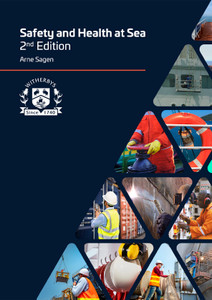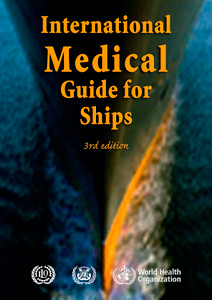
This third edition contains the first amendment to the IHR (2005): a revision to Annex 7 adopted by the 67th World Health Assembly in 2014. The amendment provides that the period of protection from vaccination with an approved vaccine against infection with Yellow Fever will be for the life of the person vaccinated rather than a period of ten years as previously required. This amendment entered into force on 11 July 2016.
Their stated purpose and scope are ‘to prevent, protect against, control and provide a public health response to the international spread of disease in ways that are commensurate with and restricted to public health risks, and which avoid unnecessary interference with international traffic and trade.’ Because the IHR are not limited to specific diseases, but are applicable to health risks, irrespective of their origin or source, they should remain current with developments in the evolution of diseases and the factors affecting their emergence and transmission. The IHR also require States to strengthen core surveillance and response capacities at the primary, intermediate and national level, as well as at designated international ports, airports and ground crossings. They further introduce a series of new health documents, including ship sanitation certificates and an international certificate of vaccination or prophylaxis for travellers.
FOREWORD
A central and historic responsibility for the World Health Organization (WHO) has been the management of the global regime for the control of the international spread of disease. Under Articles 21(a) and 22, the Constitution of WHO confers upon the World Health Assembly the authority to adopt regulations “designed to prevent the international spread of disease” which, after adoption by the Health Assembly, enter into force for all WHO Member States that do not affirmatively opt out of them within a specified time period.
The International Health Regulations (“the IHR” or “Regulations”) were adopted by the Health Assembly in 19691, having been preceded by the International Sanitary Regulations adopted by the Fourth World Health Assembly in 1951. The 1969 Regulations, which initially covered six “quarantinable diseases” were amended in 19732 and 19813, primarily to reduce the number of covered diseases from six to three (yellow fever, plague and cholera) and to mark the global eradication of smallpox.
In consideration of the growth in international travel and trade, and the emergence or re-emergence of international disease threats and other public health risks, the Forty-eighth World Health Assembly in 1995 called for a substantial revision of the Regulations adopted in 19694. In resolution WHA48.7, the Health Assembly requested the Director-General to take steps to prepare their revision, urging broad participation and cooperation in the process.
After extensive preliminary work on the revision by WHO’s Secretariat in close consultation with WHO Member States, international organizations and other relevant partners, and the momentum created by the emergence of severe acute respiratory syndrome (the first global public health emergency of the 21st century)5, the Health Assembly established an Intergovernmental Working Group in 2003 open to all Member States to review and recommend a draft revision of the Regulations to the Health Assembly6. The IHR (2005) were adopted by the Fifty-eighth World Health Assembly on 23 May 20057. They entered into force on 15 June 2007.
The purpose and scope of the IHR (2005) are “to prevent, protect against, control and provide a public health response to the international spread of disease in ways that are commensurate with and restricted to public health risks, and which avoid unnecessary interference with international traffic and trade.” The IHR (2005) contain a range of innovations, including: (a) a scope not limited to any specific disease or manner of transmission, but covering “illness or medical condition, irrespective of origin or source, that presents or could present significant harm to humans”; (b) State Party obligations to develop certain minimum core public health capacities; (c) obligations on States Parties to notify WHO of events that may constitute a public health emergency of international concern according to defined criteria; (d) provisions authorizing WHO to take into consideration unofficial reports of public health events and to obtain verification from States Parties concerning such events; (e) procedures for the determination by the Director-General of a “public health emergency of international concern” and issuance of corresponding temporary recommendations, after taking into account the views of an Emergency Committee; (f) protection of the human rights of persons and travellers; and (g) the establishment of National IHR Focal Points and WHO IHR Contact Points for urgent communications between States Parties and WHO.
By not limiting the application of the IHR (2005) to specific diseases, it is intended that the Regulations will maintain their relevance and applicability for many years to come even in the face of the continued evolution of diseases and of the factors determining their emergence and transmission. The provisions in the IHR (2005) also update and revise many of the technical and other regulatory functions, including certificates applicable to international travel and transport, and requirements for international ports, airports and ground crossings.
Addition to the foreword of the second edition
The second edition contained the text of the IHR (2005), the text of World Health Assembly resolution WHA58.3, the version of the Health Part of the Aircraft General Declaration that entered into force on 15 July 2007, appendices containing a list of States Parties and State Party reservations and other communications in connection with the IHR (2005).
Addition to the foreword of the third edition
This third edition contains the first amendment to the IHR (2005): a revision to Annex 7 adopted by the Sixty-seventh World Health Assembly in 2014. The amendment provides that the period of protection from vaccination with an approved vaccine against infection with Yellow Fever, and the validity of the related certificate, will be for the life of the person vaccinated rather than a period of ten years as previously required. In accordance with the WHO Constitution and the IHR (2005), this amendment entered into force for all States Parties on 11 July 2016. There were no reservations or rejections concerning the amendment submitted by any State Party within the period required by the IHR (2005). This edition also updates Appendix 1 containing the list of IHR (2005) States Parties (to include Liechtenstein and South Sudan).
As of the Sixth-ninth World Health Assembly in 2016, three Review Committees have been convened under the IHR (2005) and reported through the Director-General to the Health Assembly with conclusions and recommendations on key aspects of the functioning and implementation of the Regulations. The reports of the three Review Committees are available in the six official languages on the WHO website at http://www.who.int/ihr.
CONTENTS
Foreword
Revision of the International Health Regulations
INTERNATIONAL HEALTH REGULATIONS (2005)
Part I. Definitions, purpose and scope, principles and responsible authorities
Part II. Information and public health response
Part III. Recommendations
Part IV. Points of entry
Part V. Public health measures
Chapter I. General provisions
Chapter II. Special provisions for conveyances and conveyance operators
Chapter III. Special provisions for travellers
Chapter IV. Special provisions for goods, containers and container loading areas
Part VI. Health documents
Part VII. Charges
Part VIII. General provisions
Part IX. The IHR Roster of Experts, the Emergency Committee and the Review Committee
Chapter I. The IHR Roster of Experts
Chapter II. The Emergency Committee
Chapter III. The Review Committee
Part X. Final provisions
ANNEXES
1. A. Core capacity requirements for surveillance and response
B. Core capacity requirements for designated airports, ports and ground crossings
2. Decision instrument for the assessment and notification of events that may constitute a public health emergency of international concern
Examples for the application of the decision instrument for the assessment and notification of events that may constitute a public health emergency of international concern
3. Model Ship Sanitation Control Exemption Certificate/Ship Sanitation Control Certificate
Attachment to model Ship Sanitation Control Exemption Certificate/Ship Sanitation Control Certificate
4. Technical requirements pertaining to conveyances and conveyance operators
5. Specific measures for vector-borne diseases
6. Vaccination, prophylaxis and related certificates
Model international certificate of vaccination or prophylaxis
7. Requirements concerning vaccination or prophylaxis for specific diseases
8. Model of Maritime Declaration of Health
Attachment to model of Maritime Declaration of Health
9. Health Part of the Aircraft General Declaration
APPENDICES
1. States Parties to the International Health Regulations (2005)
2. Reservations and other State Party communications in connection with the International Health Regulations (2005)
Index to the International Health Regulations (2005)
As a specialised agency of the United Nations, IMO is the global standard-setting authority for the safety, security and environmental performance of international shipping. Its main role is to create a regulatory framework for the shipping industry that is fair and effective, universally adopted and universally implemented.
In other words, its role is to create a level playing-field so that ship operators cannot address their financial issues by simply cutting corners and compromising on safety, security and environmental performance. This approach also encourages innovation and efficiency.
Shipping is a truly international industry, and it can only operate effectively if the regulations and standards are themselves agreed, adopted and implemented on an international basis. And IMO is the forum at which this process takes place.
- Number of Pages:
- 82
- ISBN:
- 9789241580496
- Book Height:
- 210 mm
- Book Width:
- 150 mm
- Author:
IMO
- Published Date:
- October 2016
- Preview:
- Yes
- Publication Date:
- October 2016






